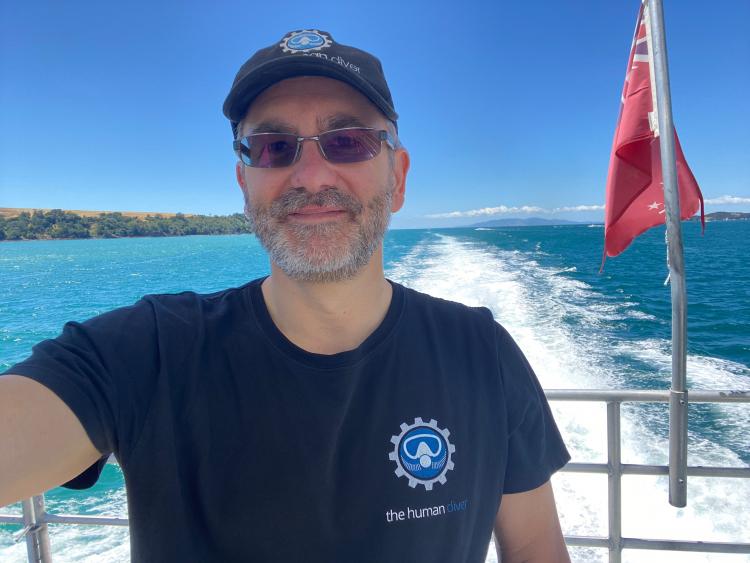Safety Culture - diving in the zone
“Thank [beep] for that! How lucky were we? We better not do that again.
Don’t tell anyone though, we don’t want to look like amateurs...”
This free program focuses on risk mitigation and is now available to all dive professionals via DAN E-Learning. DAN expects this program will not only enhance divers’ safety but will also help reduce dive operators’ liability risk.
To encourage participation, DAN is offering discounted premiums on individual professional liability and group professional liability insurance to all DAN members who complete the e-learning, which can be done in about an hour.
Diving is not without risk—there is always a chance of death. There is always a latent or potential lethality within the “system”—where system is defined as the equipment, people and the physical, social or cultural environment. We cannot make diving 100 percent safe despite what anyone tells you. We can make things safer, but we cannot make diving safe.
When we learn to scuba dive, we are given a little knowledge and taught some basic skills. We take a theory test and demonstrate that we can perform the skills and that’s it, we get a licence.

The first event of its kind, the conference provides a unique opportunity to share the knowledge and skills to make diving safer, more effective and more enjoyable, by allowing divers and instructors to take more informed risks and reduce uncertainty.
FIRST EVER HUMAN FACTORS IN DIVING CONFERENCE IS LAUNCHED AND PLACES ARE LIMITED
In part one of this series, which appeared in issue #103, I suggested a few commandments to consider in order to ensure, as far as possible, that your technical dives are safe and successful. These were: First commandment: Prepare paperwork; Second commandment: Nominate a supervisor; Third commandment: Deploy safety divers. In this sequel, I deliver a few more tablets of stone.
For the past 12 months most divers have not been able to dive as much as they would like, and many haven’t dived at all. Now that the rollout of the Coronavirus vaccine program has commenced, and the weather improving, it seems that various COVID-19 regional lockdowns are beginning to ease, and scuba diving activities should begin to resume in several Northern Hemisphere countries.
If you’ve been out of the water for a while, it’s essential to take time planning your safe return to diving. DAN
While the most exotic of these potentially dangerous organisms are fairly well known, the more mundane sometimes cause uncertainty. Know what’s most likely to cause an injury on your next dive so you can relax and enjoy making bubbles.
In part one of this two-part series we’ll refresh your knowledge of wound care and treating common marine stings; next month we’ll cover injuries that involve scrapes, bites and penetrating wounds.
A recent big-data study performed by a DAN Europe research team used modern statistical analysis techniques to dig into a sample of nearly 40,000 open-circuit recreation dives and look for patterns and clues about DCS risk factors in real-world cases. Some of what they’ve found confirms our previous knowledge and opens entirely new avenues for research into the factors that contribute to DCS risk. Here’s what we’ve learned.
The more difficult a wreck is to get to, the more rewarding its discovery, but also the more likely it is that you’ll run into trouble during or after your dive. Challenges become hazards quickly, and many offshore adventures are rife with risk factors that make it more likely that you’ll surface from your dive without a boat in sight.
Whether your charter sprung a leak and became a new dive site or drifted off in search of another diver here’s what you need to know to survive.
Checking your air a few times during a dive and coming up as the gauge nears zero is not dive planning. Before you hit the water this summer, brush up on the basics of gas management — this will help keep you safe and might even extend your bottom time.